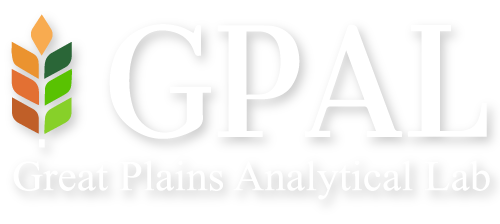Adapting to the New Salmonella Requirements: GPAL’s Perspective
As a trusted food safety partner, GPAL has closely tracked the evolving regulatory landscape around Salmonella in poultry processing. From the 2020 push for science-based policies to FSIS’s declaration of Salmonella as an adulterant in 2022, and now with the release of the FSIS Salmonella Framework, the poultry industry faces a new era of food safety requirements.
In this article, we break down what these changes mean, the challenges processors may face, and how GPAL’s rapid testing and regulatory support services can help poultry producers adapt effectively and stay compliant.
What is the FSIS Salmonella Framework?
The FSIS Salmonella Framework marks a significant shift in how food safety is enforced within the poultry sector. It introduces a more rigorous, preventative approach—centered on three core areas:
Incoming Flock Testing
Enhanced Process Control
Enforceable Final Product Standards
These requirements signal a move toward more science-based, real-time interventions to reduce Salmonella contamination before and during processing.
Incoming Flock Testing: Starting at the Source
One of the most impactful changes is the emphasis on incoming flock testing for Salmonella before slaughter. This is a critical early control step. Documenting Salmonella levels and identifying serotypes allows processors to adjust operations and apply pretreatment interventions to mitigate contamination risks.
At GPAL, we offer same-day serotype testing, giving processors fast, actionable data. Our rapid testing allows you to:
Make informed pretreatment decisions
Document compliance with FSIS protocols
Reduce contamination risk at the start of production
Our volume-based pricing and free local courier service in the Greater Kansas City area make this service accessible for processors of all sizes.
Enhanced Process Control: Monitoring Rehang to Post-Chill
The FSIS Salmonella Framework introduces tighter requirements for process control monitoring. Establishments must now test for Poultry Aerobic Count (AC) at both:
Rehang, to catch early-stage contamination
Post-chill, the final line of defense before packaging
This dual sampling system uses a one-sided statistical process control model, standardizing expectations across all processors.
At GPAL, we provide:
Poultry Aerobic Count testing
Data interpretation support
Integration-ready data for FSIS reporting
These changes are designed to identify issues earlier in the process and support continuous food safety improvements. While this may require more effort, it creates better traceability and accountability for pathogen control across the production line.
Proposed Final Product Standard: 1 CFU/g Limit
Perhaps the most consequential component of the FSIS framework is the potential implementation of an enforceable final product standard: a 1 CFU/g limit for Salmonella in certain products such as breaded and stuffed chicken.
This would raise the bar significantly, pushing processors to:
Improve pathogen control throughout production
Increase sampling and testing frequency
Monitor final products with validated methods
GPAL is prepared to help processors meet this strict standard through:
Rapid and reliable serotype testing
Efficient sample processing
Real-time results with digital data sharing options
Our lab operates 365 days a year, ensuring your compliance program runs without delays—even on weekends.
The Challenges for Poultry Processors
Transitioning to the new Salmonella requirements presents a number of challenges, especially for small- and mid-sized processors:
Increased Testing Costs
Incoming flock testing, rehang/post-chill sampling, and tighter controls all mean more tests—and higher costs.
Resource Limitations
Smaller plants may lack personnel or expertise to handle frequent sampling, statistical modeling, and reporting requirements.
Data Sharing Requirements
Facilities are now expected to share testing results with FSIS in real-time. This demands new systems for data management and reporting.
Final Product Compliance
Meeting a 1 CFU/g standard may require production changes, equipment upgrades, and revised sanitation procedures.
A Local Lab with National Impact
While our headquarters is in the heart of the Midwest, GPAL serves poultry producers nationwide. Our combination of speed, accuracy, and personalized service has made us a trusted partner for companies facing growing regulatory complexity.
From incoming flock testing to Poultry Aerobic Count, and from serotype ID to data reporting, we’re here to help you meet the new Salmonella requirements without compromising your business’s bottom line.
Final Thoughts: Compliance Made Practical
As new food safety regulations reshape the poultry industry, it’s clear that proactive, science-based approaches are the future. While these changes may feel overwhelming, they also represent an opportunity to build stronger, safer food systems.
At GPAL, we’re not just here to provide test results—we’re here to help you implement a system that works. That means:
Faster turnaround times
Tailored testing plans
Affordable services for every processor size
Regulatory-ready reporting tools
Let’s turn regulation into opportunity—because safer food benefits everyone.
Need help navigating the new Salmonella requirements?
Contact GPAL today to discuss your testing program, request a quote, or set up same-day serotype testing.
Frequently Asked Questions (FAQs)
What is the benefit of incoming flock testing?
It identifies Salmonella risk before processing begins, allowing targeted interventions to prevent contamination downstream.
What’s changing with process control?
Facilities must now test at both rehang and post-chill. AC results are evaluated using standardized statistical models.
What’s the proposed Salmonella standard?
FSIS is considering a maximum of 1 CFU/g in specific poultry products, raising the safety bar significantly.
How can GPAL support smaller processors?
We offer low minimums, flexible pricing, and free courier services to ease the burden of compliance for smaller operations.
How does GPAL handle FSIS data sharing?
Our systems are built to interface with FSIS, enabling fast, accurate, and compliant digital reporting.
